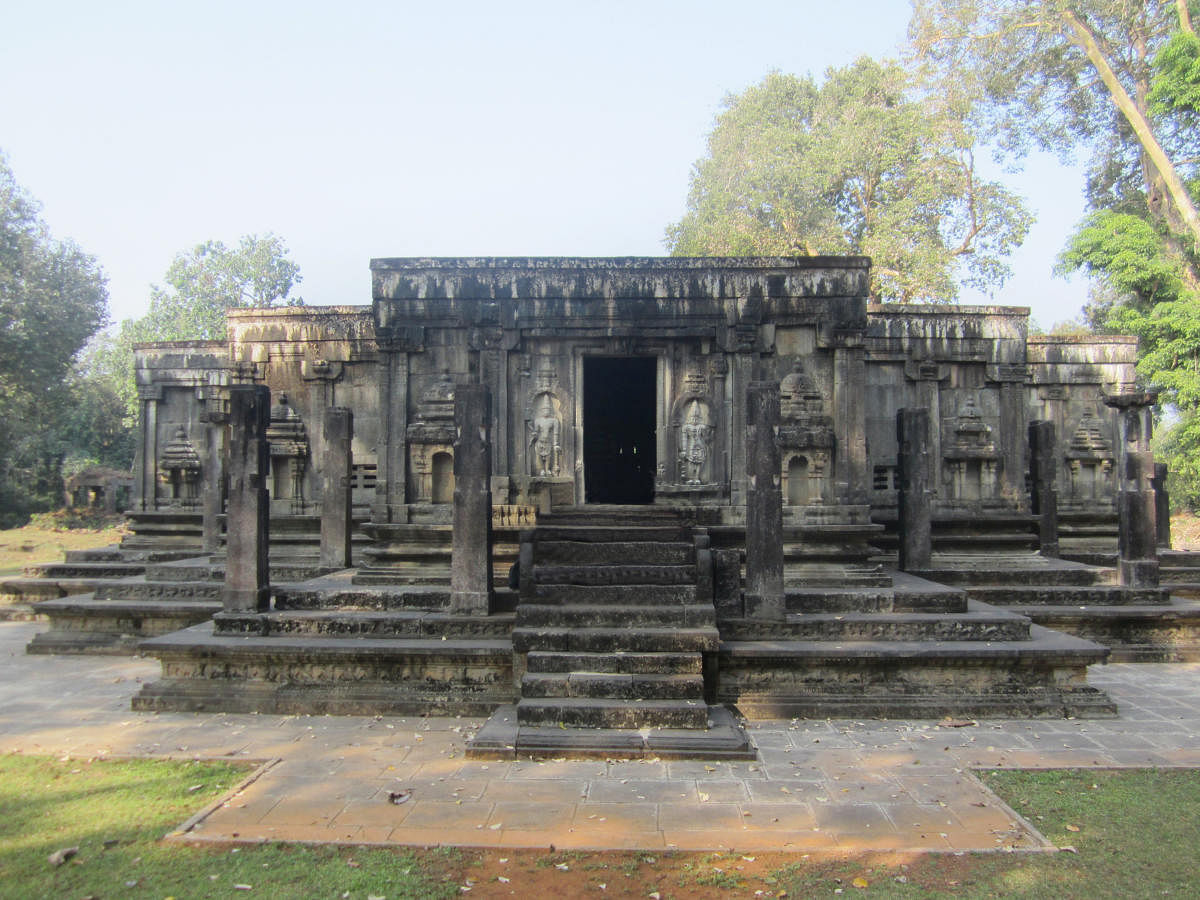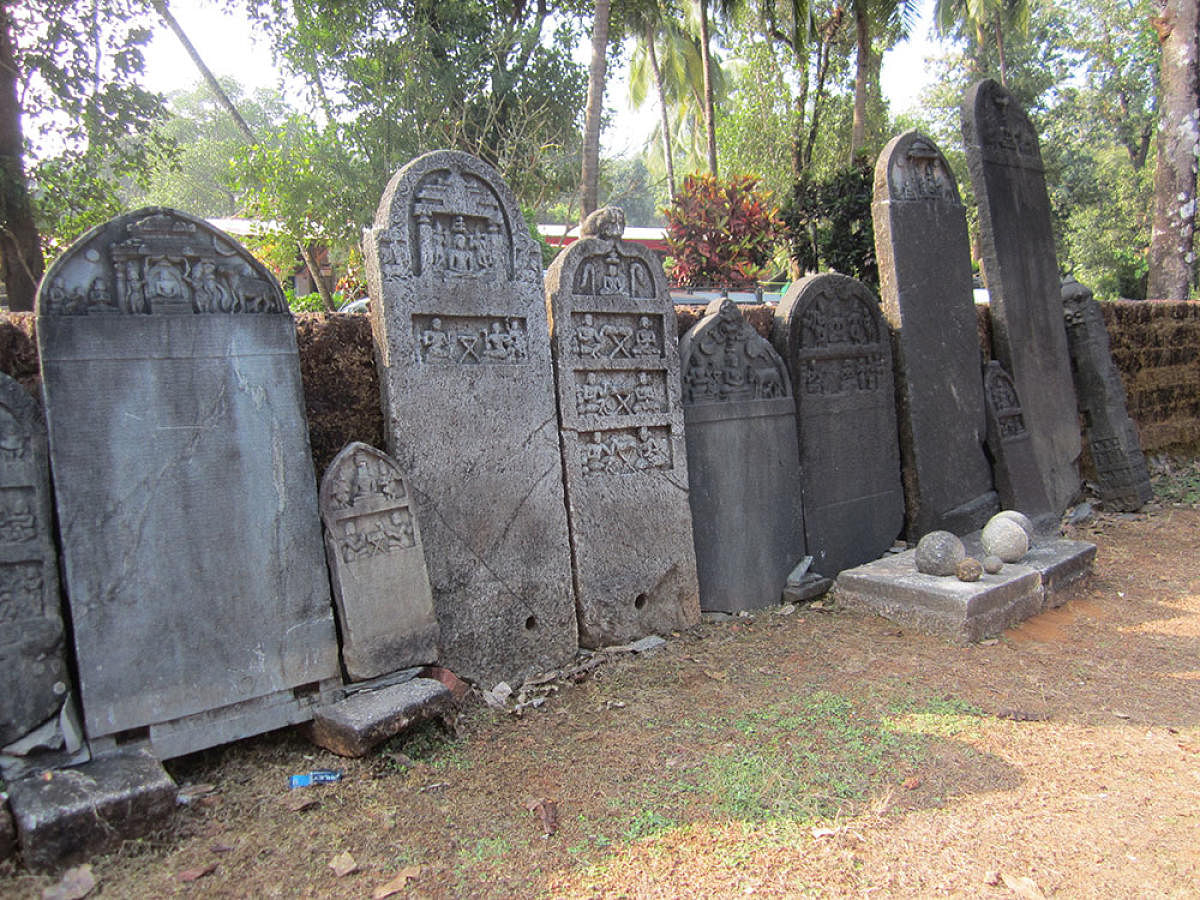

Gerusoppa, now called Nagarabastikeri, is a hamlet in Honnavar taluk in Uttara Kannada district. Nestled deep inside the evergreen jungles of the Sharavathi Valley, it is known for pepper cultivation, hence called ‘Pepper Country.’ Gerusoppa can be reached either from Jog falls, or from Honnavar side. Adventure junkies can also trek through the forests to reach the spot.
It was on a cold winter morning when we disembarked at the eerily quiet temple premises. Gerusoppa was a popular Jain centre of learning during the 14th and 15th centuries. Nearly 108 Jain temples existed over 700 acres of sprawling vegetation, but today only five have survived. Nevertheless, the crowning glory of Gerusoppa is the Chaturmukha Basadi. What captivated us was the rustic beauty of the architecture of the Jain temples. It is rare to find a place that appears so untouched by time.
We met Srikant, an affable caretaker of the place, who revealed some hidden truths about the less-explored pepper kingdom. It is said that the course of Gerusoppa history changed during the period of Rani Chennabhaira Devi, who ruled during the 16th century. Perhaps, she is considered to be one of the longest reigning women rulers in Indian history. Her empire included the present-day Uttara Kannada and Dakshina Kannada, South Goa and parts of Malabar region. Her kingdom had 37 seaports, and trade and commerce reached their peak during her rule.
Thriving centre
Honnavar served as an internal trade seaport, while Bhatkal and Mirjan harbours were used for international trade. High-quality pepper, cinnamon, spices and other commodities like fragrant rice, nutmeg, jute, copper, coconut and betel nut were regularly shipped to the European continent, West Asia and Africa.
In exchange, she imported horses and weaponry from the West. The flourishing trade became a bone of contention between various princely states in the region. The rulers of Keladi and Bilagi were relentlessly at war with Gerusoppa to possess dominion over the rich and prospering province. In fact, the brave queen joined with the Portuguese and waged wars and successfully defeated the opponents.
To continue their alliance, the Portuguese conferred her with the title “Rainha de Pimenta” – The Pepper Queen. The queen also patronised Jainism and supported building temples of Jain Tirthankaras, and the prominent among them is the Chaturmukha Basadi.
Chaturmukha Basadi was built in 1562 with grey granite stone in Vijayanagara style. The temple is built on a star-shaped platform with large, vertical stairs carved out of rocks leading to the imposing temple. The shrine has four identical entrances, each in four directions of the compass leading to the garbhagriha (sanctum sanctorum). Inside, there are statues of four thirthankaras Rishabhanatha, Ajithanatha, Sambhavanatha and Abhinandana.
The dwarapala reliefs are carved on either side of the four doors of the hall, which wear tall crowns and each entwined by Naga, the snake god. The engravings and other mural sculptures are well executed with dexterous labour. Each hall in front of the garbhagriha has four thick pillars with a square base and hanging brackets on top with an exquisitely carved lotus. The shrine signifies a celebration of art, religion and science. It is evident that Salva rulers were great patrons of art and architecture.
The joint forces of Keladi and Bilagi rulers attacked Gerusoppa, finally defeating the ageing queen. Thus, an illustrious era came to an end. For over four centuries, Chaturmukha Basadi has stood tall, being the lone sentinel of the Rani Chennabhaira Devi’s forgotten empire.